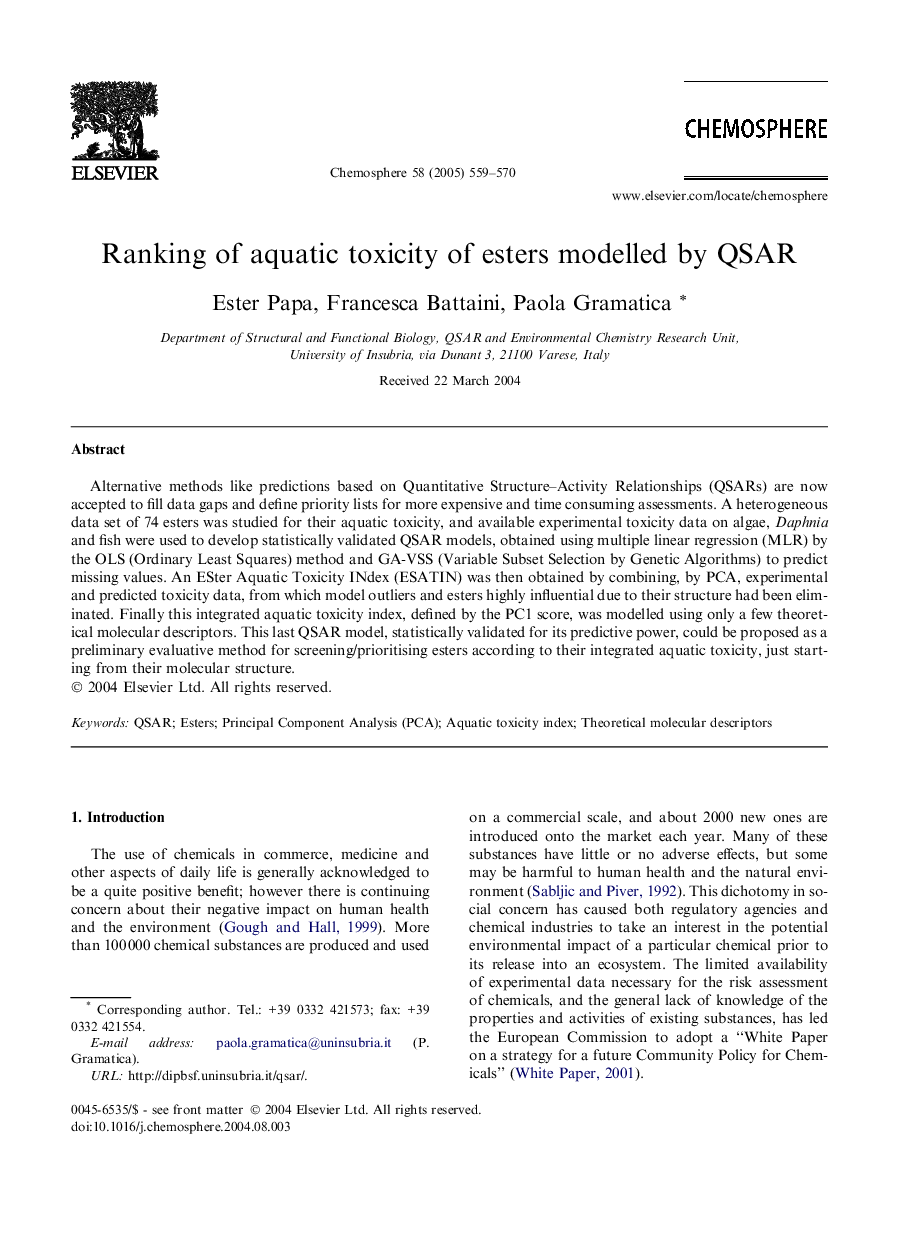| Article ID | Journal | Published Year | Pages | File Type |
|---|---|---|---|---|
| 9451802 | Chemosphere | 2005 | 12 Pages |
Abstract
Alternative methods like predictions based on Quantitative Structure-Activity Relationships (QSARs) are now accepted to fill data gaps and define priority lists for more expensive and time consuming assessments. A heterogeneous data set of 74 esters was studied for their aquatic toxicity, and available experimental toxicity data on algae, Daphnia and fish were used to develop statistically validated QSAR models, obtained using multiple linear regression (MLR) by the OLS (Ordinary Least Squares) method and GA-VSS (Variable Subset Selection by Genetic Algorithms) to predict missing values. An ESter Aquatic Toxicity INdex (ESATIN) was then obtained by combining, by PCA, experimental and predicted toxicity data, from which model outliers and esters highly influential due to their structure had been eliminated. Finally this integrated aquatic toxicity index, defined by the PC1 score, was modelled using only a few theoretical molecular descriptors. This last QSAR model, statistically validated for its predictive power, could be proposed as a preliminary evaluative method for screening/prioritising esters according to their integrated aquatic toxicity, just starting from their molecular structure.
Related Topics
Life Sciences
Environmental Science
Environmental Chemistry
Authors
Ester Papa, Francesca Battaini, Paola Gramatica,
